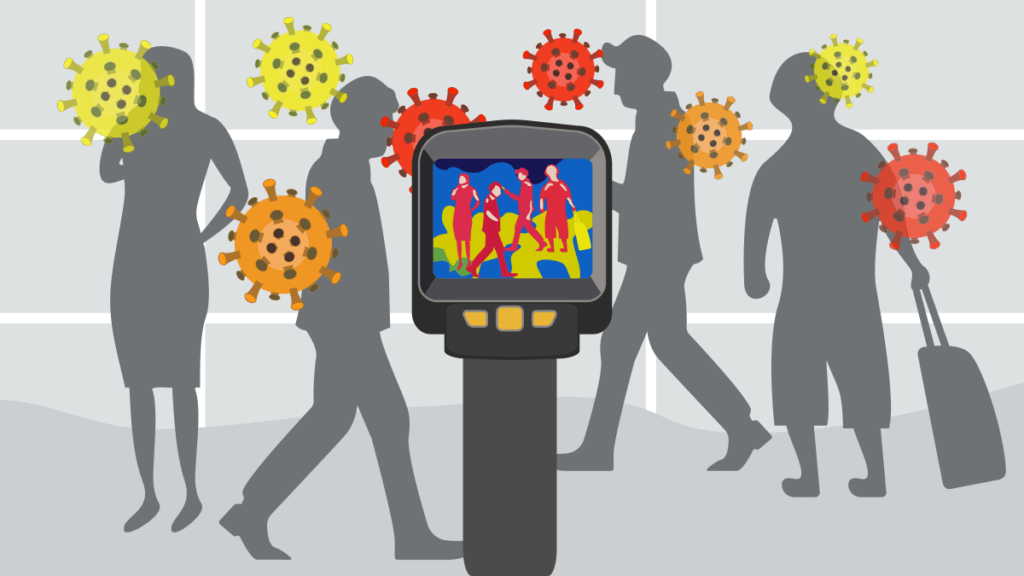Big data and state surveillance, the solution – for now

There has been good news in recent weeks with reports that China – the original source – of the coronavirus pandemic – has now contained its spread. This has however, come at a cost, with the use of more intense levels of surveillance and tracking measures.
Before the outbreak, citizens of China were subject to more rigorous levels of national surveillance, and tech-driven tracking measures. However, with the current situation as it is, the invasion into our daily lives has intensified substantially.
Officials in numerous countries have used helmet mounted infrared heat-sensory cameras that are able to identify people with higher body temperatures in large crowds. There are also smartphone apps employing machine learning as a means to rate citizen’s temperature and health using a colour coded scheme that rates their risk level using red, yellow, or green.
China has seen drones equipped with heat sensory camera’s, loud speakers and even “chemical spray jets” used to enforce strict quarantine laws that could see citizens jailed for a maximum of 7 years if they do not comply. In some cases, people have been unable to access their homes in locked-down apartment blocks when automated security measures suggest that person is a risk.
In Iran, the government passionately advocated downloading an application that it claimed would diagnose contagion, failing to mention that it can also be used to track the whereabouts and movements of those who use it. When security researchers revealed the true potential of the application, it was rapidly removed from app stores and disowned by state officials.
Yet, the thing is, these measures do seem to be working – In China at least. Furthermore, South Korea and Singapore have also reported fewer domestic cases in the last week – claiming that state deployed measures are helping to mitigate the outbreak. In actual fact, the majority of their cases are now, coming from abroad.
So, as the core of the pandemic moves from Asia to Western countries, does this indicate that our leaders will employ such drastic measures to get the same result? Will Western citizens react with the same level of calmness about the technological invasion into their lives?
In a post 9/11 world, people in the United States and the Western world have become more aware and accepting of the need for balance between surveillance for security’s sake and personal freedom – more specifically, the right to privacy. Of course, the events of recent months have brought this to the fore. It could be said, that to most people, terrorism was a distant threat – something they saw on the news but were not particularly worried about. However, every state in America has now reported infections, along with most countries in the world and consequently, the danger is much closer to home and very real.
More stringent measures are now being taken in the West – that were once deemed extreme and oppressive – specifically if they were coming from China or nations with authoritarian rule. Some are accusing leaders in European nations (such as the UK), as being too slow to act in the interests of public safety and for delaying measures like lockdowns, business closure and stopping public gatherings and events.
As state authorities start to adopt such measures – as a result of this shift of public sentiment – there are also changes as to what has now become acceptable.
The government in the United Kingdom is using location data to measure how people are complying with isolation requirements, self-quarantine and social distancing. So far, this location data is anonymised. Data from operator O2 is being used to monitor the movement of the public around London and could also be used to gain insight into reactions to newly-imposed restrictions on public transport – as it is not known what the effects will be.
At the moment, due to such stringent isolation measures being implemented and a general fear over the virus, it is unlikely that many would oppose to this kind of analysis and behavioral data. We know from the crisis in China, that things can be taken further than this. The lingering possibility of more infections and deaths creates a fear that advocates the tracking of individuals who are infected or have the potential to be.
Despite such dramatic and worrying times, there appears to be little justification for the use of data and analysis to be done behind closed doors without anyone knowing. Public knowledge of such things, will not limit its chances of working.
However, there is a potential danger that all these changes and actions may become increasingly normal – especially if we are subjected to lengthy periods of quarantine. Once the outbreak is contained, our lives would have adapted to the measures needed to keep it like that, so there is always the potential for another outbreak. Prevention of future pandemics will become a priority of governments and security services for years to come. This might involve technology like biometric surveillance, movement tracking, and AI becoming a part of daily life and both providers and governments will have to make sure that it is not exploited for profit or political gain.
In recent weeks, restaurants, sports events, overseas travel, and family get-togethers, have disappeared from our lives and with the way things are going, the next worry could be concerns over both privacy and freedom from state surveillance. Despite seeming like a sensible resolve for the current crisis, it could also be the start of a dangerous journey, if careful thought is not applied and potential consequences are not considered.
